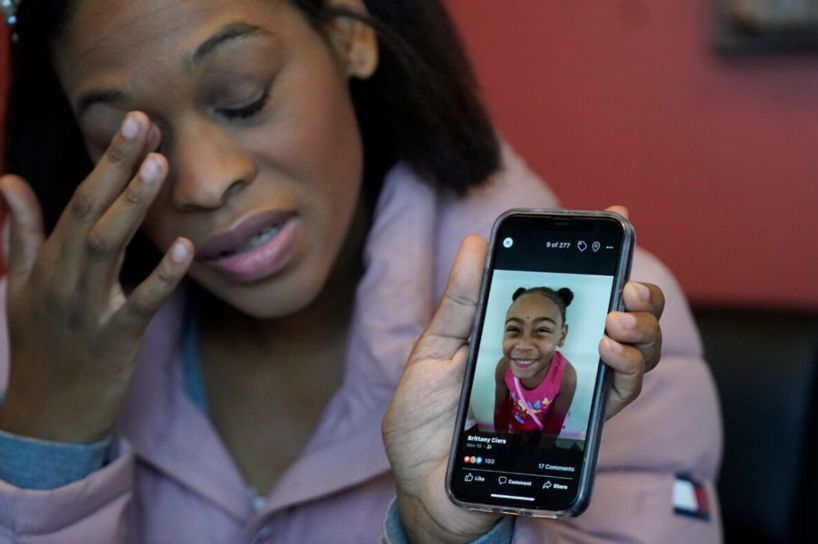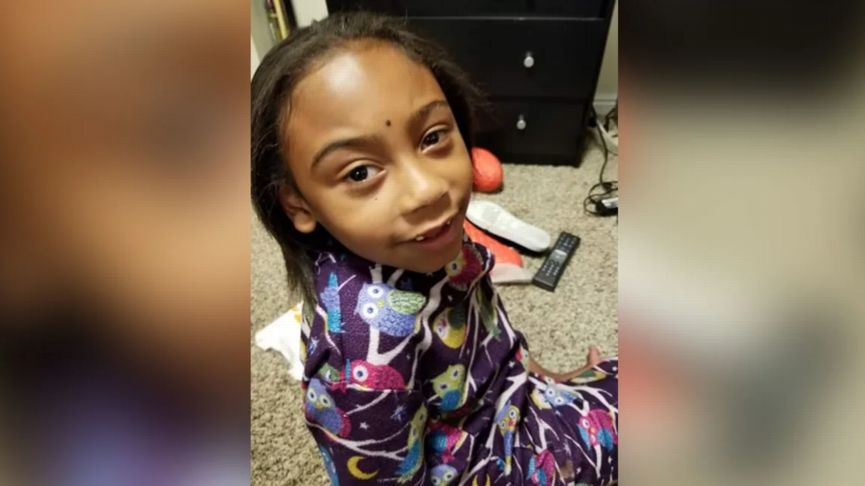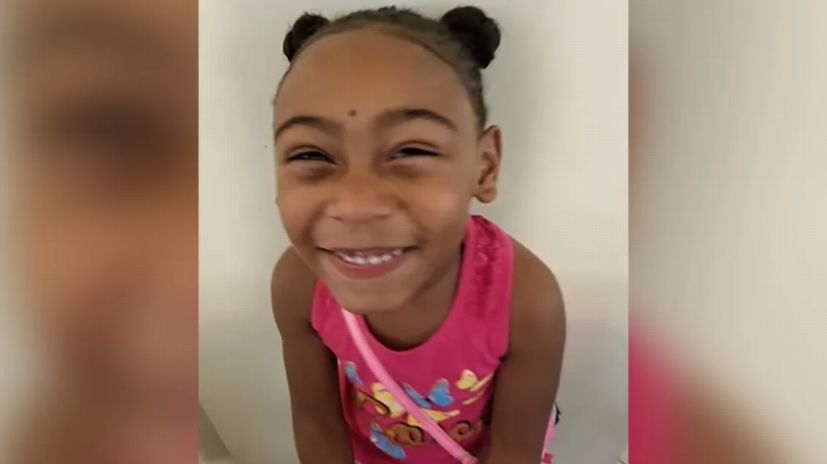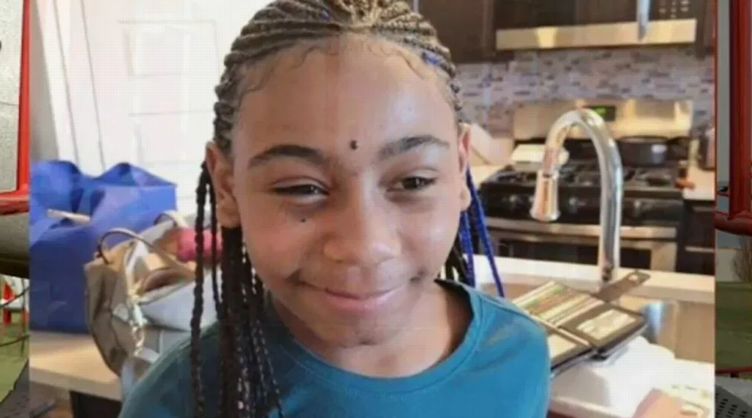Brittany Tichenor and Youth Mental Health Crises Addressing Bullying and Suicide Awareness
Youth mental health has emerged as a critical issue in contemporary society, drawing attention from educators, health professionals, and policymakers. The increasing rates of anxiety, depression, and suicide among young people underscore the urgent need for comprehensive mental health support and preventive measures. Amid these concerns, the tragic story of Brittany Tichenor and her daughter, Isabella “Izzy” Tichenor, highlights the devastating impact of bullying on a child’s mental well-being. Izzy, a bright and resilient 10-year-old with big brown eyes, faced relentless bullying at her local public elementary school in Utah. Despite her mother’s efforts to address the issue, Izzy ultimately died by suicide on November 6, 2021. This heartbreaking event not only shattered her family but also brought to light the severe consequences of unchecked bullying and the necessity for effective intervention strategies.
Brittany Tichenor’s poignant account of her daughter’s struggles reveals the hidden pain that many young people endure. Izzy’s story is a stark reminder of the profound and often unseen emotional battles faced by children who are bullied. Brittany recalls the moments of hurt her daughter experienced and the feeling of helplessness she felt as a parent, despite her repeated attempts to seek help from the school district. This narrative is not an isolated incident but part of a broader pattern of rising mental health issues among youth, exacerbated by bullying and a lack of adequate support systems.
The purpose of this essay is to delve into the complex interplay between bullying, mental health challenges, and suicide among youth, with a focus on Brittany Tichenor’s advocacy and her daughter’s story. By examining the factors contributing to this crisis and exploring preventive measures and support systems, the essay aims to shed light on the importance of creating safe and nurturing environments for young people. Through understanding and action, we can hope to prevent further tragedies and support the mental health and well-being of all children.
The Tragic Case of Isabella “Izzy” Tichenor
Isabella “Izzy” Tichenor, a vibrant and kind-hearted 10-year-old girl, was known for her resilience and the warmth of her big, brown eyes. Born into a loving family, Izzy was one of the few Black students at her local public elementary school in Utah and was also autistic. These aspects of her identity made her a target for bullying, a reality that became painfully apparent as she faced relentless harassment from her peers and, at times, even her teachers.
Izzy’s struggles with bullying were profound and multifaceted. According to her mother, Brittany Tichenor, Izzy would occasionally confide in her about the taunts she endured at school. The bullying ranged from derogatory comments about her race to mockery of her autism. Izzy was often teased about the “dot on her head,” a reference to a birthmark, which became a focal point for the cruel remarks of her classmates. Despite Brittany’s repeated calls to the school and the district to address the bullying, the full extent of Izzy’s suffering remained largely unaddressed until it was too late.
On November 6, 2021, Izzy’s life came to a tragic end when she died by suicide. Brittany recalls the day with heartbreaking clarity, expressing that she was unaware of how dire her daughter’s mental health struggles had become. She believes that Izzy made a temporary decision in a moment of profound hurt, a decision that has left a lasting void in the lives of those who loved her. The aftermath of Izzy’s death revealed the severity of the bullying she faced, as other children came forward with stories of the harassment she endured.
Brittany Tichenor’s reflections on her daughter’s suicide are filled with grief and a sense of regret. She wishes she had been more aware of the warning signs and had taken more decisive action to protect Izzy. Brittany describes feeling as though a part of her died with Izzy, a sentiment that echoes the profound emotional and psychological impact on the family. The Tichenor family, once whole, now grapples with an unimaginable loss, each member affected deeply by Izzy’s absence.
The community’s response to Izzy’s death was one of shock and sorrow. Her story resonated with many, highlighting the urgent need for better support systems in schools to address bullying and mental health issues. Vigils and memorials were held in Izzy’s honor, and her mother has since become an advocate for anti-bullying initiatives and mental health awareness. Brittany founded Izzy’s Village, a nonprofit organization aimed at providing support for young people, particularly those of color, who face similar struggles. The organization’s mission is to ensure that no other child or family has to endure the pain that the Tichenors have experienced.
The Rise of Bullying in American Schools
Bullying in American schools has been a persistent issue, but recent years have seen a troubling increase in its prevalence. A survey conducted by the Boys & Girls Clubs of America in August highlighted this growing problem, revealing that 40% of youth aged 9 to 18 reported being bullied on school property in the past year. This marked an increase from 37% in 2022. Additionally, 18% of youth reported experiencing cyberbullying, underscoring the pervasive nature of this issue in both physical and digital spaces.
Bullying manifests in various forms, each with its own set of damaging consequences. Physical bullying, which includes hitting, kicking, and other forms of physical aggression, remains a significant concern. Verbal bullying, characterized by name-calling, insults, and verbal harassment, is equally harmful, often leaving deep emotional scars. Cyberbullying, facilitated by the rise of social media and digital communication platforms, has introduced a new dimension to the problem. This form of bullying can be particularly insidious, as it follows victims beyond the school grounds, invading their personal spaces and leaving them feeling vulnerable and isolated.
The increase in bullying incidents can be partly attributed to the role of the internet and social media. These platforms, while offering avenues for connection and communication, also provide bullies with tools to harass their victims anonymously and relentlessly. The 24/7 nature of online interactions means that victims of cyberbullying have little respite, leading to heightened levels of stress, anxiety, and depression. The internet’s reach amplifies the impact of bullying, making it a public spectacle and exacerbating the sense of humiliation and helplessness experienced by the victims.
The rise of bullying and its devastating effects have not gone unnoticed. Educators, policymakers, and mental health professionals are increasingly recognizing the need for comprehensive anti-bullying policies and mental health support in schools. Programs aimed at fostering a positive school climate, promoting inclusivity, and educating students about the impact of bullying are being implemented across the country. However, the effectiveness of these programs varies, and there is a pressing need for continuous evaluation and improvement.
Moreover, parents and communities play a crucial role in combating bullying. Open communication between parents and children about their daily experiences and emotional well-being is essential. Parents must be vigilant for signs of bullying and take immediate action if they suspect their child is a victim. Schools, in turn, must foster an environment where students feel safe to report bullying without fear of retaliation.
The tragic case of Isabella Tichenor serves as a poignant reminder of the urgent need to address bullying in all its forms. Her story highlights the severe consequences of unchecked bullying and the vital importance of early intervention and support. As communities come together to tackle this issue, the goal must be to create a safe and nurturing environment for all students, where bullying is swiftly addressed, and mental health support is readily available. Through collective effort and sustained commitment, it is possible to mitigate the impact of bullying and ensure that every child has the opportunity to thrive in a supportive and inclusive educational setting.
Mental Health Crisis Among American Youth
The mental health crisis among American youth has reached alarming levels, with rising rates of anxiety, depression, and suicide signaling a public health emergency. Data from the U.S. Centers for Disease Control and Prevention (CDC) provides a sobering overview of this crisis. Between 2016 and 2019, approximately 5.8 million children in the U.S. were diagnosed with anxiety, and about 2.7 million were diagnosed with depression. These numbers have only increased in recent years, reflecting a growing mental health burden among young people.
The rise in diagnoses of anxiety and depression among children and adolescents is a multifaceted issue, driven by various factors including social, environmental, and biological influences. The pressures of academic performance, social media, and an increasingly uncertain world contribute to the heightened stress levels experienced by today’s youth. Additionally, the stigma surrounding mental health often prevents young people from seeking help, exacerbating the problem.
A pivotal document that sheds light on the escalating mental health crisis is the 2021 report by U.S. Surgeon General Dr. Vivek H. Murthy. This report highlighted the profound impact of the COVID-19 pandemic on the mental health of young people. The pandemic disrupted daily routines, isolated children from their peers, and introduced a sense of instability and fear. According to the report, there was a 51% increase in emergency room visits for suspected suicide attempts among girls during the pandemic. This statistic alone underscores the severity of the situation.
The report also noted a doubling of anxiety and depression symptoms across genders during the pandemic. The prolonged periods of isolation, coupled with the constant barrage of negative news and the loss of normalcy, have taken a significant toll on the mental well-being of children and adolescents. The effects of these stressors are compounded for those already vulnerable due to pre-existing mental health conditions or socio-economic challenges.
In addition to the pandemic, other societal changes have contributed to the mental health crisis. The rise of social media has created new avenues for comparison, bullying, and unrealistic expectations, all of which can negatively impact self-esteem and mental health. The anonymity of the internet allows for cyberbullying, which can be relentless and pervasive, further deteriorating mental health.
The CDC and other health organizations have called for urgent action to address this crisis. There is a growing recognition that mental health support needs to be integrated into schools, communities, and healthcare systems. Early intervention, access to mental health resources, and reducing the stigma associated with mental health issues are critical steps in mitigating this crisis. By providing young people with the support they need, it is possible to improve their mental health outcomes and overall quality of life.
Link Between Bullying and Suicide
The correlation between bullying and an increased risk of suicide is well-documented, with numerous studies highlighting the profound impact of bullying on mental health. The CDC defines bullying as “unwanted, aggressive behavior among school-aged children that involves a real or perceived power imbalance.” This behavior, which is repeated or has the potential to be repeated over time, can lead to severe emotional and psychological distress for the victims.
Research indicates that both individuals who are bullied and those who bully others are at an increased risk for suicide-related behaviors. Bullying can result in feelings of helplessness, isolation, and worthlessness, which are significant risk factors for suicidal thoughts and actions. The public and medical awareness of this link has increased in recent years, particularly as more families have come forward to share their tragic experiences.
Several case studies and recent legal settlements have brought attention to the devastating consequences of bullying. One notable example is the case involving a New Jersey school district, where the parents of a 12-year-old girl who died by suicide reached a $9.1 million settlement in a wrongful death lawsuit. The lawsuit alleged that the school district failed to protect the girl from bullying, which ultimately led to her taking her own life. This case highlights the legal and moral responsibilities of schools to provide a safe environment for all students.
Another tragic case is that of a 17-year-old student at an elite boarding school in New Jersey, who died by suicide in 2022 after experiencing bullying. The school publicly admitted its failure to protect the student, acknowledging the link between the bullying he endured and his subsequent death. The student’s mother, Elizabeth Reid, emphasized the deadly consequences of bullying and the exacerbating role of the internet in these situations.
The impact of bullying on mental health can lead to extreme outcomes, as evidenced by these cases. Victims of bullying often experience chronic stress, anxiety, and depression, which can diminish their ability to cope with everyday challenges. The relentless nature of bullying, particularly in the digital age, means that victims have little respite from their tormentors. This continuous exposure to negative interactions can erode their mental health, leading to feelings of despair and hopelessness.
The CDC’s findings support the need for comprehensive anti-bullying policies and mental health support systems within schools. Early intervention is crucial, as it can prevent the escalation of bullying and its associated mental health issues. Schools must implement programs that foster a positive and inclusive environment, where students feel safe and supported. These programs should include education on the effects of bullying, training for staff on how to handle bullying incidents, and accessible mental health resources for students.
Parents also play a critical role in addressing bullying and supporting their children’s mental health. Open communication about daily experiences and feelings can help parents identify signs of bullying and intervene promptly. Parents should encourage their children to speak up about bullying and seek help from trusted adults. Additionally, fostering a supportive home environment where children feel valued and understood can mitigate the negative impact of bullying.
The tragic case of Isabella Tichenor and the legal settlements involving other bullying-related suicides underscore the urgent need for collective action. By recognizing the link between bullying and suicide, and implementing effective prevention and intervention strategies, it is possible to create safer and more supportive environments for young people. This requires a concerted effort from schools, parents, communities, and policymakers to ensure that every child has the opportunity to thrive without the fear of bullying or the devastating consequences it can bring.
Prevention and Intervention Strategies
Preventing bullying and supporting affected youth requires a multifaceted approach involving schools, parents, and mental health professionals. Each stakeholder plays a critical role in creating a safe and nurturing environment for children, fostering resilience, and addressing mental health concerns.
The Role of Schools
Schools are the frontline in the battle against bullying. They have the responsibility to create a safe, inclusive, and supportive environment where all students can thrive. Effective prevention strategies include:
- Anti-Bullying Policies: Schools should implement clear anti-bullying policies that define bullying, outline consequences, and provide procedures for reporting and addressing incidents. These policies need to be consistently enforced and communicated to students, staff, and parents.
- Education and Awareness Programs: Schools should educate students about the effects of bullying and promote empathy, respect, and inclusion. Programs such as peer mentoring, where older students support younger ones, can be particularly effective.
- Training for Staff: Teachers and school staff should receive training to recognize signs of bullying, intervene appropriately, and support victims. Staff should also be equipped to handle cyberbullying and understand the unique challenges it presents.
- Support Systems: Schools should provide access to counselors and mental health professionals who can offer support to students experiencing bullying. Creating safe spaces, like counseling offices or dedicated wellness centers, can encourage students to seek help.
The Role of Parents
Parents are crucial in preventing bullying and supporting their children’s mental health. They need to foster open communication, be vigilant for signs of bullying, and collaborate with schools and mental health professionals.
- Open Communication: Parents should talk regularly with their children about their daily experiences and feelings. Asking open-ended questions can help children express themselves more freely.
- Recognizing Signs: Parents should be aware of changes in their child’s behavior, such as withdrawal, anxiety, or reluctance to go to school, which may indicate bullying.
- Encouraging Reporting: Children should be encouraged to report bullying to a trusted adult, whether it is a parent, teacher, or school counselor. Assuring them that they will be supported can alleviate their fear of retaliation.
- Parental Involvement: Parents should engage with the school community, attend meetings, and collaborate with teachers and administrators to address bullying concerns.
The Role of Mental Health Professionals
Mental health professionals play a vital role in supporting both victims and perpetrators of bullying. They can offer counseling, therapeutic interventions, and guidance on coping strategies.
- Individual Counseling: Providing one-on-one counseling for victims can help them process their experiences, build resilience, and develop coping mechanisms.
- Group Therapy: Group therapy sessions can offer peer support, allowing children to share their experiences and learn from others in similar situations.
- Workshops and Training: Mental health professionals can conduct workshops for students, staff, and parents on topics like stress management, emotional regulation, and the effects of bullying.
- Crisis Intervention: Immediate support for students in crisis is crucial. Mental health professionals should be available to provide urgent care and coordinate with other services if needed.
The SafeUT App
The SafeUT app is an innovative tool designed to provide mental health support and prevent bullying among Utah’s youth. Developed by the University of Utah’s Huntsman Mental Health Institute, SafeUT offers 24/7 access to licensed mental health professionals and a platform for reporting safety concerns.
- Functionality: The app allows students, parents, and educators to chat confidentially with mental health counselors, submit tips about bullying or other safety concerns, and access mental health resources. The app is user-friendly and designed to be accessible to all age groups.
- Usage Statistics: SafeUT has seen widespread adoption, with over 885,000 users including elementary, middle, high school, and college students. In the past year, the app recorded over 1 million messages with mental health professionals and more than 9,000 confidential tips, highlighting its significant impact.
- Role in Mental Health Support: SafeUT provides immediate support to students in distress, helping them manage crises and connect with necessary resources. The app’s confidential nature encourages more students to seek help without fear of stigma.
The Role of Parents and Community
Addressing youth mental health and bullying requires active involvement from parents and the broader community. A collaborative approach ensures comprehensive support for children and fosters a culture of empathy and respect.
Importance of Parental Involvement
Parents are the first line of defense in preventing bullying and supporting mental health. Their involvement is critical in identifying issues early and providing a supportive home environment.
- Active Listening: Parents should practice active listening, giving their children undivided attention and validating their feelings. This helps children feel heard and understood.
- Creating a Safe Space: Home should be a safe space where children can freely express their concerns without fear of judgment. Encouraging open dialogue about school experiences can reveal underlying issues.
- Monitoring Online Activity: Parents should monitor their children’s online activity to protect them from cyberbullying. Setting boundaries for screen time and discussing online safety can mitigate risks.
- Collaborating with Schools: Regular communication with teachers and school administrators can help parents stay informed about their child’s social interactions and academic performance.
Guidelines and Conversation Starters
Engaging children in conversations about bullying and mental health can be challenging. Here are some guidelines and conversation starters for parents:
- Be Specific: Instead of asking general questions, be specific. “Can you tell me about your lunch break today?” can prompt more detailed responses.
- Show Empathy: Express empathy and understanding. “It sounds like you had a tough day. Do you want to talk about what happened?”
- Discuss Bullying Directly: Address bullying directly. “Have you seen anyone being bullied at school? How did that make you feel?”
- Talk About Feelings: Encourage discussions about feelings. “What makes you happy/sad/worried at school?”
- Promote Problem-Solving: Help children think through solutions. “What can we do together if you feel bullied?”
Community Awareness and Nonprofit Organizations
Community awareness and support are crucial in addressing bullying and promoting mental health. Nonprofit organizations like Izzy’s Village play a vital role in these efforts.
- Community Programs: Community centers can offer programs that teach children about empathy, conflict resolution, and the importance of mental health. These programs can also provide support groups for parents and children.
- Public Awareness Campaigns: Campaigns to raise awareness about the impact of bullying and the importance of mental health can mobilize community action. These campaigns can include posters, social media initiatives, and community events.
- Nonprofit Organizations: Organizations like Izzy’s Village provide essential resources and support for families affected by bullying. They offer educational workshops, counseling services, and advocacy for anti-bullying policies.
- Volunteer Opportunities: Community members can volunteer their time to support anti-bullying initiatives and mental health programs. Mentorship programs, for instance, can provide positive role models for young people.
Izzy’s Village, founded in memory of Isabella Tichenor, aims to support young people of color facing bullying and mental health challenges. The organization provides a safe space for youth to seek help and promotes education on bullying prevention. By sharing Izzy’s story, Brittany Tichenor hopes to prevent similar tragedies and foster a supportive community.
In conclusion, preventing bullying and supporting youth mental health requires a coordinated effort from schools, parents, mental health professionals, and the community. By implementing comprehensive strategies, promoting open communication, and leveraging resources like the SafeUT app and nonprofit organizations, we can create a safer and more nurturing environment for all children. Through collective action and sustained commitment, it is possible to mitigate the impact of bullying and ensure that every child has the opportunity to thrive.
In conclusion, the essay has delved into the pressing issues of youth mental health crises, the devastating impact of bullying, and the tragic correlation between bullying and suicide. Isabella “Izzy” Tichenor’s story underscores the profound consequences of unchecked bullying and the urgent need for comprehensive support systems. Brittany Tichenor’s advocacy has brought to light the hidden pain experienced by many young people, emphasizing the critical role of addressing bullying in safeguarding mental well-being.
Throughout the discussion, we explored the alarming rise in mental health issues among young people, including increasing diagnoses of anxiety and depression exacerbated by the COVID-19 pandemic, as highlighted by U.S. Surgeon General Dr. Vivek H. Murthy.
Furthermore, the essay examined the crucial roles that schools, parents, and mental health professionals play in preventing bullying and supporting affected youth. Initiatives like the SafeUT app were cited as innovative approaches to providing mental health support and reporting safety concerns. Additionally, the involvement of parents and the broader community was emphasized as essential in fostering a safe and supportive environment for children.
Addressing these complex issues demands collective responsibility. Schools must implement and enforce clear anti-bullying policies while providing robust resources for mental health support. Parents need to maintain open communication with their children, remain vigilant for signs of bullying, and collaborate closely with schools and mental health professionals. Mental health professionals should offer accessible support and interventions tailored to both victims and perpetrators of bullying. Community awareness and the efforts of nonprofit organizations, exemplified by Izzy’s Village, are pivotal in cultivating a culture of empathy and respect.
The call to action is clear: we must increase awareness, allocate better resources, and strengthen support systems to protect and empower young individuals. By working together, we can create an environment where every child feels safe, valued, and supported, thereby preventing the tragic outcomes that arise from bullying and mental health challenges. Let us commit to making a difference and ensuring the well-being of our youth.
EN -The Legal and Social Repercussions of Central Regional High School Bullying
Understanding What Happened to Aubreigh Wyatt The Impact of Bullying and Social Media on Teen Mental Health
Navigating the Waters Mississippi Red Snapper Season 2024
Adriana Kuch Bullies A Deep Dive into Bullying and Institutional Response
The Isabella Izzy Tichenor Case and Its Impact on Anti-Bullying Policies in School
How Did Aubreigh Wyatt Die The Tragic Silence and Social Media Uprising
The Heartbreaking Story of Rosalie Avila and the Urgent Call to Combat Bullying





